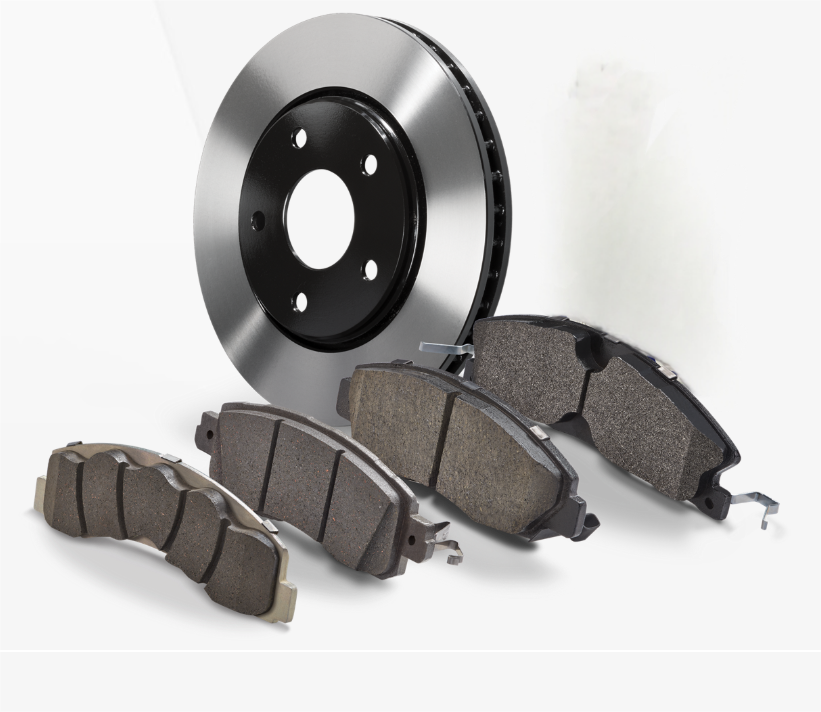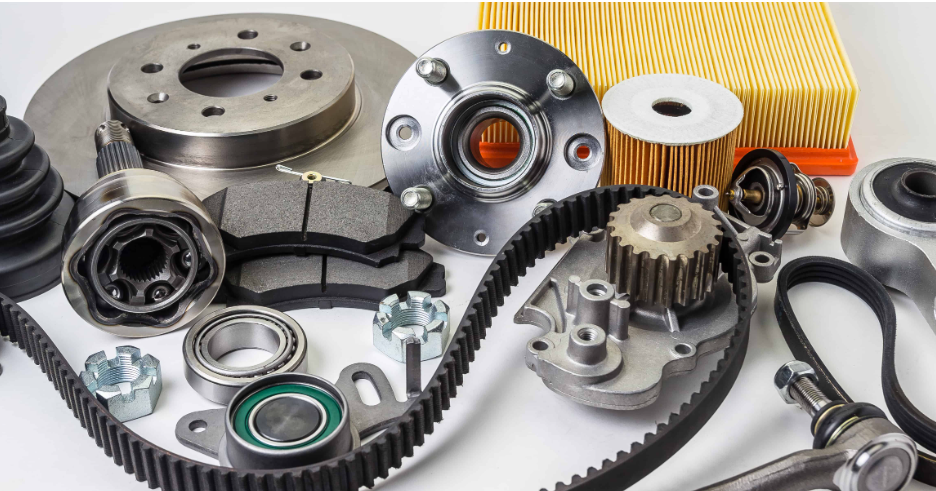Understanding Brake Pad Types and Their Benefits
Organic Brake Pads: Eco-Friendly and Quiet
Organic brake pads are built with environmental-friendly materials like rubber, resins, and fibers and are also recyclable. They are designed to be quieter than the other varieties, which winds up being a quieter drive that many city-dwellers seem to prefer. Additionally, they are less harsh on the rotor and, in turn, on both the pads and the braking surface as well, due to their softer nature. Quiet braking and environmentally acceptable, if you're looking for both, well, organic brake pads may be what you need for your particular car.
Ceramic Brake Pads: Smooth Performance and Low Dust
Ceramic pads are built to use a ceramic matrix in order to provide excellent braking power while producing little dust. Excellent thermal stability ensure transfer of friction during the times when you need it the most to ensure safety and a lifetime of use. Durable ceramic pads generally last longer than organic and also offer a clean, linear braking feel. If you want a smooth breaking and low maintainance, then consider having ceramic brake pads.
Semi-Metallic Brake Pads: Durable Heat Management
The composition of Semi-metallic brake pads is something between ceramic and metallic pads, and this enables them to handle high braking temperatures and dissipate heat well. They have the best heat dissipation, so they're perfect for high-performance vehicles and for towing. Nevertheless, due to their strength, they could be noisier and dustier than organic or ceramic pads. If you want a bit of performance, but don’t want to give up much durability, semi-metallic brake pads might be the answer.
Metallic Brake Pads: Heavy-Duty Stopping Power
Metallic pads are intended for racers and individuals who routinely carry heavy loads and need the ultimate stopping power. They are strong to provide excellent holding power in high-torque applications, yet they are noisy. For peak performance, though, make sure you match these pads to the correct rotors, and take into account the wear on your braking components. Metallic Brake Pads For the rider who wants tons of braking power in extreme conditions, metallic pads are king.
By understanding the distinct characteristics and benefits of each brake pad type, you can select the best fit for your driving needs.
Factors to Consider When Choosing Brake Pads
Driving Style: Matching Brake Pads to Your Habits
When choosing the right brake pads, the first step is to know your driving habits. For exuberant over drivers who tend to drive more spiritedly, high performance types of pads such as semi-metallic would more fit the purpose as they offer better stopping power. Sporting car drivers, however, are almost all driving on urban roads in city conditions with regular stops, so may appreciate the peace and being green of organic brake pads. We'd all like to avoid this situation, but much of it depends on the type of driving you do, since this has a huge bearing on brake wear and what demands are placed on your braking system. The right brake pad for the way you drive You need a brake pad that matches your driving style - that’s how you can improve your safety and driving convenience.
Cost vs. Longevity: Balancing Budget and Quality
When purchasing brake pads, it is crucial to balance cost and longevity. Although you may find cheaper pads more attractive at first, they wear out more quickly. Spending more on high-quality alternatives such as ceramic brake pads will equate to more use and better performance. You should take the overall cost of ownership into account, including how frequently you will need to replace your brake pads, as this may negate any upfront savings over the cheap alternatives. Professional feedback and comparisons will help you decide on the brake pads that fit both your budget and desired performance.
Noise Reduction: Ensuring Quiet Braking
For a lot of drivers, reduction of noise is crucially important because of the brake pads. Various materials exhibit different braking noise levels. For example, ceramic brake pads are often favored for their silent braking, thanks to their high-grade construction and compound recipe. If you are looking for quiet, you might find brake pads that are advertised as low noise. Not only this but the correct installation and routine maintenance of your brake system contribute to quiet brake pads so you can have some peace and quiet while you’re behind the wheel.
Brake Pad Maintenance and Replacement
How to Check Brake Pad Wear (Visual and Audible Signs)
Periodic checking of your brake pads is a must for your carâs performance and your own safety in the long run. Thinning or uneven wear on the brake pad surface will be easily visible during a visual inspection, indicating a possible need to replace the pads. If visible, these warning signals indicate that braking pad might not have enough stopping power. Also, listen constantly for sounds of metal on metal, like squealing or grinding sounds, which mean your brake pads are shot and it's urgent that they are replaced. If these noises are overlooked, this can result in decreased braking performance and become a safety issue. If you don’t feel comfortable deciding when to change your brake pads then I urge you speak to a professional mechanic to make sure your brake system is in perfect working order. Besides, it is important to keep your brake working effectively while driving.
Car Brake Pad Replacement: When and How to Do It
When to Replace Your Brake Pads is Important for Your Car or Truck. Typically, you’ll want to replace the brake pads once they measure 3mm or less since that is usually the min safe amount of thickness. The replacement procedure consists of a couple of important steps: First, you need to safely raise the vehicle and remove the wheel. Next, It is important that if you suspect you have worn brake pads, follow a process to swap them out for new ones, and check other items such as rotors and calipers to ensure they show no signs of wear or damage. Following this procedure will allow all your components to operate properly, and help prevent any chance of brake failure. You should reference your car's service manual, and if you've never done it before, you might want to get help from the pros. This approach helps with the vehicle’s safety and performance.
Extending Brake Pad Lifespan with Proper Care
The life expectancy of brake pads can be greatly influenced by proper care. Start by keeping the correct tire pressure and get your wheels aligned at regular intervals; this ensures that your brake pads wear evenly as you’re stopping. Secondly, shifting to a smoother driving pattern means less wear on the brake pads, which allows them to last longer. Text Routine brake inspections and servicing for your braking system can help prevent premature wear of brake pads. With regular maintenance and upkeep, youâll find that your brake pads last even longer â and drive even better.
Best Brake Pads for Specific Applications
Best Brake Pads for Trucks: Heavy-Duty Solutions
As to heavy trucks, it’s important to choose the right brake pads that are designed for heavier weight. Dedicated truck manufacturers produce durable products adapted for even the most challenging duties. Semi-metallic and high-performance ceramic brake pads are commonly recommended for heavy use because they can withstand high loads without wearing out. Most often these pads are the best solution for Tow vehicles, as it achieves the best balance between pad life, dust, noise and stopping power. Favouring these characteristics will guarantee safety and will enhance the efficiency of your braking on the road.
High-Performance Brake Pads for Aggressive Driving
For performance drivers, the use of high performance brake pads is the obvious choice to improve their owm stopping power or pedal feel, with resting assured of extra security as well as orver confidence. This pad is designed to be anti-fade and provide powerful braking for extreme driving, those on track or who enjoy spirited driving. It's important to have compatibility with the braking system of the vehicle in order to use their advanced features. With such specialized pads, drivers can enjoy increased performance and safety even when making high-speed maneuvers.
Ceramic vs. Semi-Metallic: Choosing for Urban vs. Off-Road Use
The choice between ceramic and metallic brake pads often depends on driving conditions. Ceramic pads really excel in an urban environment for their very low dust, quiet operation - perfect for frequent stop-and-go traffic. Semi-metallic pads are a better choice for off-road driving such is heat tolerance and long lifespan. "You can check the norm for road conditions to choose the style that provides the best braking. Choosing the right brake pad material can improve handling and increase driving safety conditions based on driving situations types.







